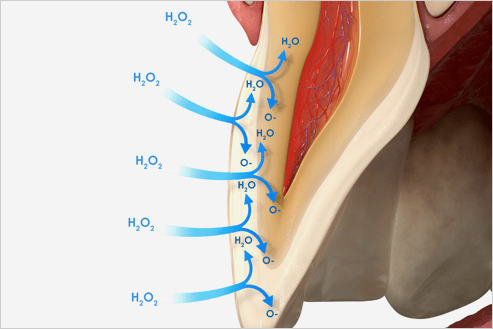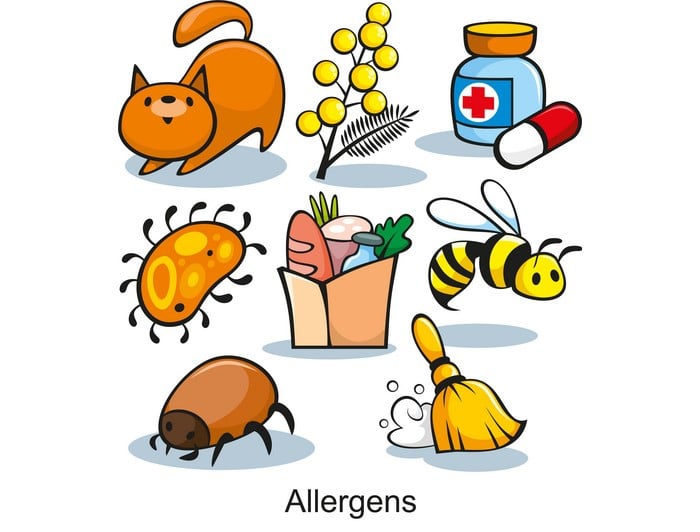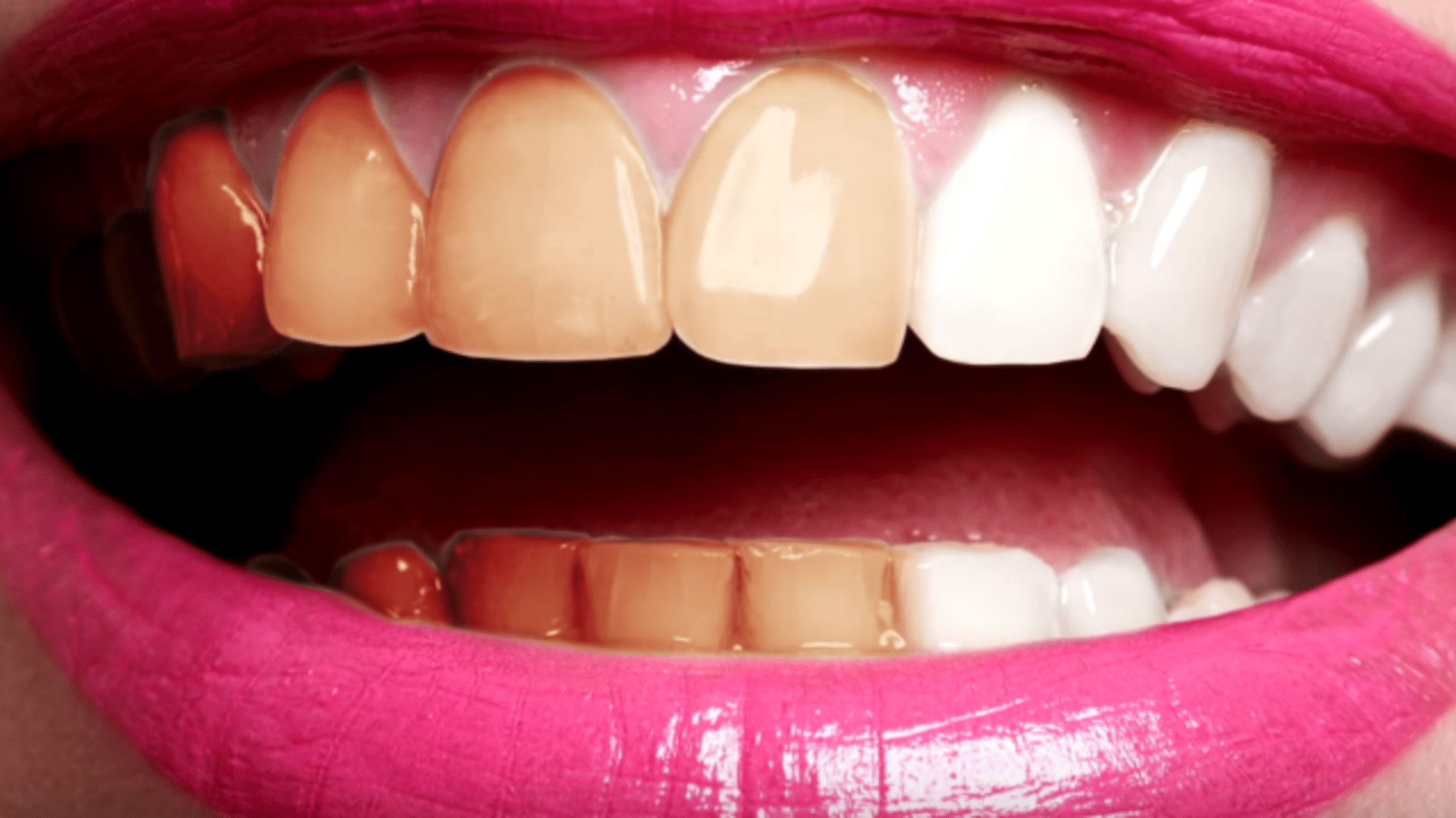Do you know the #1 requested procedure people request at a cosmetic dentist? Teeth whitening.
I know, what a shocker right? There’s not a huge market for teeth yellowing compared to teeth whitening. Surprise, surprise.
People want white teeth, but what’s the best method for teeth whitening and how does teeth bleaching work? Well, today’s your lucky day. In this article, help you prevent the common mistakes people make with teeth whitening.
I’ll share my tips, tricks, and things you need to know before you brighten those pearly whites. At the end, I’ll also share with you the single biggest misconception about teeth whitening.
Should I Whiten my Teeth at Home or at the Dental Office

Deciding on where to whiten your teeth is very simple. There is only a single active ingredient in all teeth whitening products: Hydrogen peroxide. It’s the same agent, whether it’s prescription use or over the counter. Any other ingredients in the product are inactive fillers needed to create the right consistency of the product.
You may also see the primary ingredient listed as carbamide peroxide. It’s ultimately a derivative that converts to hydrogen peroxide in a ratio of 3 to 1. So to compare apples to apples, if you see carbamide peroxide on the label, you have to divide it by three to understand the equivalence in terms of hydrogen peroxide.
The key to understand is that whitening can be effective at any percentage, but what differs is the time of use. A dental office is a controlled environment and can therefore use higher percentages of hydrogen peroxide. That’s why when teeth whitening is done in the office a patient has drastic results in one day. The same results can be achieved at home, but it requires a commitment to consistently repeat the process over a long period of time.
How do I Know Which Percentage of Teeth Whitening Gel is Best for Me
A high percentage of hydrogen peroxide typically is only kept on the teeth for 20 minutes maximum, while a lower percentage can be worn for 6 hours overnight.
Much of the selection comes down to personal preference. If you have a tendency to develop tooth sensitivity or if you want to minimize the risks of irritating your gums, that’s when you’d select a lower concentration.
How does Teeth Whitening Work

So have you ever wondered how does teeth whitening work? I mean just by putting a clear gel on your teeth, how does it whiten them. Doesn’t seem to make sense right? Well, the answer comes down to part biology and part chemistry.
How teeth whitening works is the hydrogen peroxide sits on your teeth and causes a reaction. The hydrogen peroxide shuttles oxygen molecules into the enamel of the tooth and whitens discolored stains that are under the surface, trapped in what are called tubules of the tooth. The result is a brighter-looking surface of your tooth.
Think of teeth bleaching like pressure washing barnacles off a boat. The boat looks darker than it is until the surface is cleaned to reveal the pure underlying color.
Single Visit Whitening vs. Home Whitening
Teeth Whitening – Home Whitening
Nowadays, you can walk into any pharmacy, supermarket, or department store and find numerous at-home whitening kits. So how do you choose?
Bleaching is all about hydrogen peroxide concentration and how long its in contact with the tooth. The higher the percentage, the less time the gel needs to be left on the teeth to reach its full reaction.
When selecting an at-home teeth bleaching product, you also need to be aware of the delivery system. Here’s what I mean. When a whitening product is applied to the teeth, it needs an amount of time for the whitening reaction to occur. The hydrogren perioxide can be delivered to the teeth in a variety of methods like gel, liquid, powder, strips, or in-trays.
All teeth whitening products must be in stable contact with the tooth for at least 15 minutes without getting diluted or washing away. There’s a lot of different types of teeth bleaching methods from toothpaste to rinses to powders. How could you keep those types of whitening systems in contact with the teeth for long enough? You can’t. It is difficult to keep them in contact with the teeth for a sufficient amount of time.
Studies show that contact time matters. That is why whitening rinses, powders, and toothpaste are generally less effective compared to the viscous gels, strips, or tray systems for teeth whitening.
Teeth Whitening – In-Office Whitening
How is in-office teeth whitening different than at-home teeth whitening? Should you go to a cosmetic dental practice for whitening? It generally comes down to the speed of results. The prescription in-office whitening utilizes a hydrogen peroxide gel that is 35-40%, which is much stronger than at home. It’s usually applied 4 times in 15 minute increments. It’s typically done in an office and placed by a professional to minimize contact of the high concentration gel with the gums.
Here’s the general process of how In-Office Whitening procedures work:
- Preparation for Teeth Whitening – A cosmetic dentist will start the teeth whitening procedure by covering your lips and gums with a block out material. The block out material protects the gums from the gel during teeth whitening. Photos of your smile will be taken to compare and the cosmetic dentist will estimate a goal for shades of improvement.
- Application of Teeth Whitening Gel– A high-concentration teeth bleaching gel is applied to the surfaces of your teeth. The concentration is typically between 35% to 40% hydrogen peroxide.
- The reaction of Teeth Whitening Gel – The gel is allowed to sit on the teeth for 15 minutes. Some cosmetic dentists use a whitening light which is placed directly in front of your teeth (teaser- we’ll discuss more on that later). The gel gently penetrates the outer-most (enamel) layer of your teeth and it breaking up stains and discoloration during the process. The process of applying gel for 15 minutes at a time and rinsing it off is repeated about 4 times.
- Final Results – The final results are achieved in about 1 hour. The patient is instructed to not have tea, coffee, or red wine for about 72 hours and is recommended toothpaste for sensitivity.
Can I be Allergic to Teeth Whitening or any Ingredients I Should Worry About?

Allergies to teeth whitening products are rare. However, if you are prone to allergies and choosing between two products, select the product with fewer additives.
Because the active ingredient is in the form of hydrogen peroxide or it’s derivative carbamide peroxide, all other ingredients in whitening formulations are fillers to optimize the delivery of the product to the teeth.
So now you’re wondering, why are any other fillers added to teeth whitening products? The key to understanding here is that the product must stay in contact with the teeth for a long enough time. If it washes away too soon, it will affect the results. That’s the primary goal of any other additives.
The Worst Complication
As with any treatment, there are pros and cons. The most common complication with hydrogen peroxide is that it can irritate and even burn the gums. It usually is a temporary white-looking irritation of the gums which returns to normal in a few days. However, if an excessive amount of whitening gel stays on the gums, it can cause gum recession.
Gum irritation from teeth whitening is also supported in by studies which show hydrogen peroxide is cytotoxic to the soft tissues and digestive tract. The key takeaway is that most complications to the gums are reversible, but its important to whiten responsibly by keeping the product on the teeth and away from the gums.
What Does the Teeth Whitening Light Do

Many products both professional and OTC utilize a blue light as part of their whitening system. The concept here is that the light increases the rate that the hydrogen peroxide reacts with the tooth. However, does it really?
So far, the studies don’t agree. Most studies show some differences detected by computers, but no visual difference detected by the human eye. For the studies conducted in vivo (in actual patients) most found no added benefit. Light-activated systems simply didn’t perform better. Any increased performance was attributed to dehydration of the teeth that reversed soon after.
What it comes down to is that even if the blue light speeds the reaction, eventually, the whitening product will reach a point which the reaction ends, with or without the light. That endpoint seems to be about the same either way.
There is some anecdotal feeling that the LED light reduces the amount of time the strips need to be in contact with the teeth, but most studies don’t support that the LED light provides any benefit in terms of efficacy.
Is it Bad if My Teeth Are Sensitive
Here’s the deal with sensitivity after teeth whitening, it’s common and normal to expect for a few days. The feeling is usually is mild but occasionally with sharp electrical type sensations of the teeth. If you are having
The best relief is by using a toothpaste for sensitivity. The primary ingredient that helps with whitening sensitivity is called potassium nitrate. As a secondary option, fluoride has also been shown to help with sensitivity. I usually recommend patients with sensitive teeth to use a toothpaste with potassium nitrate and stannous fluoride, and also use a fluoride mouth rinse.
What Happens if you Leave Whitening Strips on your Teeth Too Long
If you overdo teeth whitening with too much too soon, you will have sensitivity. Think of it like a sunburn. Getting a sunburn a few times throughout your lifetime isn’t likely to permanently damage your skin, but you sure do pay for it. It’s painful for a few days. Overdoing teeth whitening is similar to a sunburn. A little sun is good for you, but too much in a short period of time, causes pain for a few days after.
The sensitivity after teeth whitening is what we call dentin hypersensitivity. Did you know that teeth have pores similar to the skin? In the case of the tooth, they are called dentin tubules.
What happens when we whiten our teeth is the gel opens the tubules, shuttles oxygen radicals in, and cleans them out. By doing this it leaves the pores of the teeth temporarily open to fluids and air. It creates a temporary sensitivity afterward. It feels like a spontaneous electrical sensation within the tooth that lasts for a few seconds. The sensitivity occurs for a few days after bleaching. It has no long term effects on the teeth and typically, the sensitivity resolves completely in 3-5 days.
Does Teeth Whitening Damage Teeth
Most studies show that whitening does not damage tooth enamel. There is some new research from 2019 that shows tooth whitening fragments proteins deeper in the tooth, but the researchers are not currently sure if the damage was temporary or permanent. Future research will be exploring whitening’s effect on the protein layers of the teeth.
The current understanding of teeth whitening is that the process is safe, but you should understand teeth whitening can have risks if done excessively and there is still information which needs to be evaluated further.
What to Eat after Teeth Whitening
After whitening, do not expose the teeth to liquids or foods that are dark for a few days. Think in terms of avoiding coffee, wine, or tea a few days after bleaching your teeth. And yes, the same goes for if you drink it out of a straw. You should still plan to avoid it.
Whitening you teeth and then drinking coffee is like two people in a canoe paddling in different directions. The whitening product opens the pores and cleans them out. Coffee, tea, or red wine easily restain the teeth dark. Avoid dark liquids and foods for 72 hours after whitening your teeth.
The Biggest Misconception
Think you can whitening your teeth and have teeth that are perfectly pure white? Think again. It’s good to understand that teeth whitening had great benefits but you have to understand its limitations.
You know that celebrity you admire with the glimmering pearly whites? Their teeth are probably fake. Whitening often requires additional treatment for the desired effect. Natural teeth can get pretty white, but there are limits to the color of natural teeth. Most people look at Hollywood celebrities and think they can achieve the same level by teeth whitening, but its not always possible.
The celebrity may have had veneers or crowns to create that look. It’s a bit of comparing apples and oranges. Natural teeth simply can’t get as white as veneers. So its important for patients to understand the expectations of what is possible for naturally white teeth.
TEETH WHITENING FAQS

How does professional teeth whitening compare to over the counter options?
There are many over the counter options for teeth whitening including whiting toothpaste, whitening strips, and gels. For patients who want immediate results, the professional option may be the better choice. If you are prone to sensitive teeth and have time to commit to systematically whitening over a long period of time, then over the counter options might be a good choose.
Both professional teeth bleaching and at-home whitening can be effective, it just depends on the time and level of commitment by the patient.
How much does teeth whitening cost?
Considering that teeth whitening affects the entire mouth, it is actually one of the most effective and affordable cosmetic dentistry treatments. The cost of your whitening treatment will depend on the type of whitening you choose and your desired outcome.
In office whitening costs an average of $400-600 per treatment and over the counter whitening from a range between $20-50 depending on the system you choose.
Will teeth whitening cause my teeth to be more sensitive?
One of the more common side effects of teeth whitening is tooth sensitivity. If you have teeth sensitivity after whitening, it generally will fully improve in 3-7 days.
Gums irritated by teeth bleaching fully recover in most cases in 2-5 days.
How long does teeth whitening last?
The results of teeth whitening will vary based on each individual mostly based on the patients diet, lifestyle, and ability to do touchups of their whitening. Most patients can expect teeth whitening results to last six months to a year. If you touch-up your whitening periodically it can extend the treatment results indefinitely.


